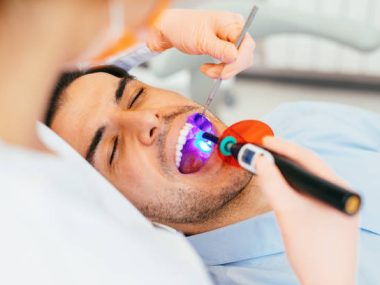Does insurance cover invisalign? In recent years, advancements in orthodontic treatments have provided individuals with more discreet and flexible options for achieving straighter smiles.
Invisalign, a popular alternative to traditional braces, has gained popularity for its effectiveness and the aesthetic appeal it offers.
However, as with any medical or dental procedure, cost considerations come into play.
Many individuals interested in undergoing Invisalign treatment find themselves asking the question, “Does insurance cover Invisalign?”
Understanding the complexities of insurance coverage for orthodontic treatments like Invisalign can be a daunting task.
Insurance policies vary widely in terms of what they cover, and the specifics can often be obscured by intricate terminology and conditions.
This article aims to shed light on the intricate relationship between Invisalign treatment and insurance coverage.
By delving into the factors that influence coverage, the types of insurance plans that might include orthodontic benefits and the steps one can take to determine their eligibility for coverage, this resource intends to empower individuals with the knowledge needed to make informed decisions about their orthodontic journey.
Whether you’re considering Invisalign for yourself, a family member, or a dependent, navigating the realm of insurance coverage can significantly impact your decision-making process.
Join us as we explore the nuances of insurance coverage for Invisalign, enabling you to approach your orthodontic treatment journey with clarity and confidence.
Also Read:
Is Dental Insurance Worth It? (Find Out Now)
How Can Mortgage Fraud Be Detected?
Does Insurance Cover Invisalign?
The extent of insurance coverage for Invisalign, an increasingly popular orthodontic treatment, varies significantly among different insurance plans.
In general, dental insurance policies may offer partial coverage for orthodontic procedures, including Invisalign, particularly for individuals under the age of 18.
However, coverage for adults can be less common.
Insurance plans typically categorize orthodontic treatments as either medically necessary or cosmetic.
Medically necessary cases, often involving severe misalignment or bite issues, are more likely to be covered to some extent.
Cosmetic cases, aimed at minor adjustments, are less likely to receive full coverage.
Even when coverage is available, there are usually limitations such as waiting periods, pre-authorization requirements, and annual or lifetime maximums.
Additionally, in-network providers might offer better coverage than out-of-network options.
To determine coverage, it’s crucial to review your insurance policy’s orthodontic benefits, inquire about pre-authorization, and confirm whether your orthodontist is in-network.
If Invisalign is deemed necessary for oral health, there’s a better chance of obtaining some coverage.
For cases where insurance falls short, flexible spending accounts (FSAs) or health savings accounts (HSAs) might offer financial assistance.
Overall, understanding your specific insurance plan and communicating openly with both your insurance provider and orthodontist is essential in gauging the extent to which insurance covers Invisalign for your unique situation.
Steps to Determine Coverage for Invisalign
Navigating the complexities of insurance coverage for Invisalign involves several essential steps.
First, carefully review your dental insurance policy, paying close attention to the orthodontic benefits section.
This will outline the coverage details, whether for medically necessary cases or purely cosmetic adjustments.
Next, reach out to your insurance provider to inquire about the specifics of Invisalign coverage.
Ask about any pre-authorization requirements, waiting periods, and documentation needed from your orthodontist.
This will give you a clear understanding of the process and potential costs.
Consult with your orthodontist as well.
They can help assess your orthodontic needs and work with you to determine if Invisalign is medically necessary, potentially increasing the chances of insurance coverage.
If your orthodontist recommends Invisalign, they can provide detailed documentation to support the case.
This may involve X-rays, photographs, and a treatment plan.
Submitting this documentation to your insurance company can streamline the pre-authorization process.
Keep in mind that in-network providers often offer more favorable coverage terms.
Confirm if your orthodontist is part of your insurance network to optimize benefits.
In cases where insurance coverage is limited, exploring flexible spending accounts (FSAs) or health savings accounts (HSAs) can help manage out-of-pocket costs.
Overall, the key lies in proactive communication with your insurance provider and orthodontist.
By following these steps, you can gain a clearer picture of how much coverage your insurance offers for Invisalign, making informed decisions about your orthodontic journey.
Tips for Maximizing Insurance Benefits
Maximizing insurance benefits for Invisalign involves strategic planning and understanding the nuances of your insurance policy.
Begin by thoroughly reviewing your insurance plan to grasp the orthodontic coverage it offers.
Look for details on coverage percentages, annual or lifetime maximums, and any waiting periods.
Choosing an in-network orthodontist can lead to more favorable coverage terms.
Inquire about potential orthodontists who are part of your insurance network, and consider seeking recommendations from your insurer.
Before starting Invisalign treatment, obtain a detailed treatment plan and cost estimate from your orthodontist.
Submit this to your insurance provider for pre-authorization.
This can help avoid surprises regarding coverage and costs during the course of treatment.
Strategically time your treatment start date to align with your insurance coverage cycle.
Initiating treatment at the beginning of a new policy year can allow you to make the most of your annual coverage limit.
Keep thorough records of all interactions with your insurance provider, including names, dates, and details of conversations.
This can prove invaluable if any disputes arise regarding coverage.
Lastly, consider combining insurance benefits with flexible spending accounts (FSAs) or health savings accounts (HSAs) to mitigate out-of-pocket costs.
By following these tips and being proactive in your approach, you can optimize your insurance benefits and ensure a smoother financial experience while undergoing Invisalign treatment.
Also Read:
How Does a Reverse Mortgage Work in California?
How Long Is the Average Mortgage?
Conclusion
When it comes to orthodontic care, the question “Does insurance cover Invisalign?” unfolds as a multifaceted inquiry.
Insurance coverage hinges on factors like policy specifics, medical necessity, and provider networks.
Navigating this landscape demands proactive research, candid conversations with insurance providers and orthodontists, and strategic planning.
While coverage may not be comprehensive, understanding your policy’s orthodontic benefits, exploring alternatives like flexible spending accounts (FSAs) or health savings accounts (HSAs), and choosing in-network professionals can all contribute to managing costs effectively.
By unraveling the complexities of insurance coverage, individuals can confidently pursue their desired Invisalign treatment with greater clarity and financial preparedness.






